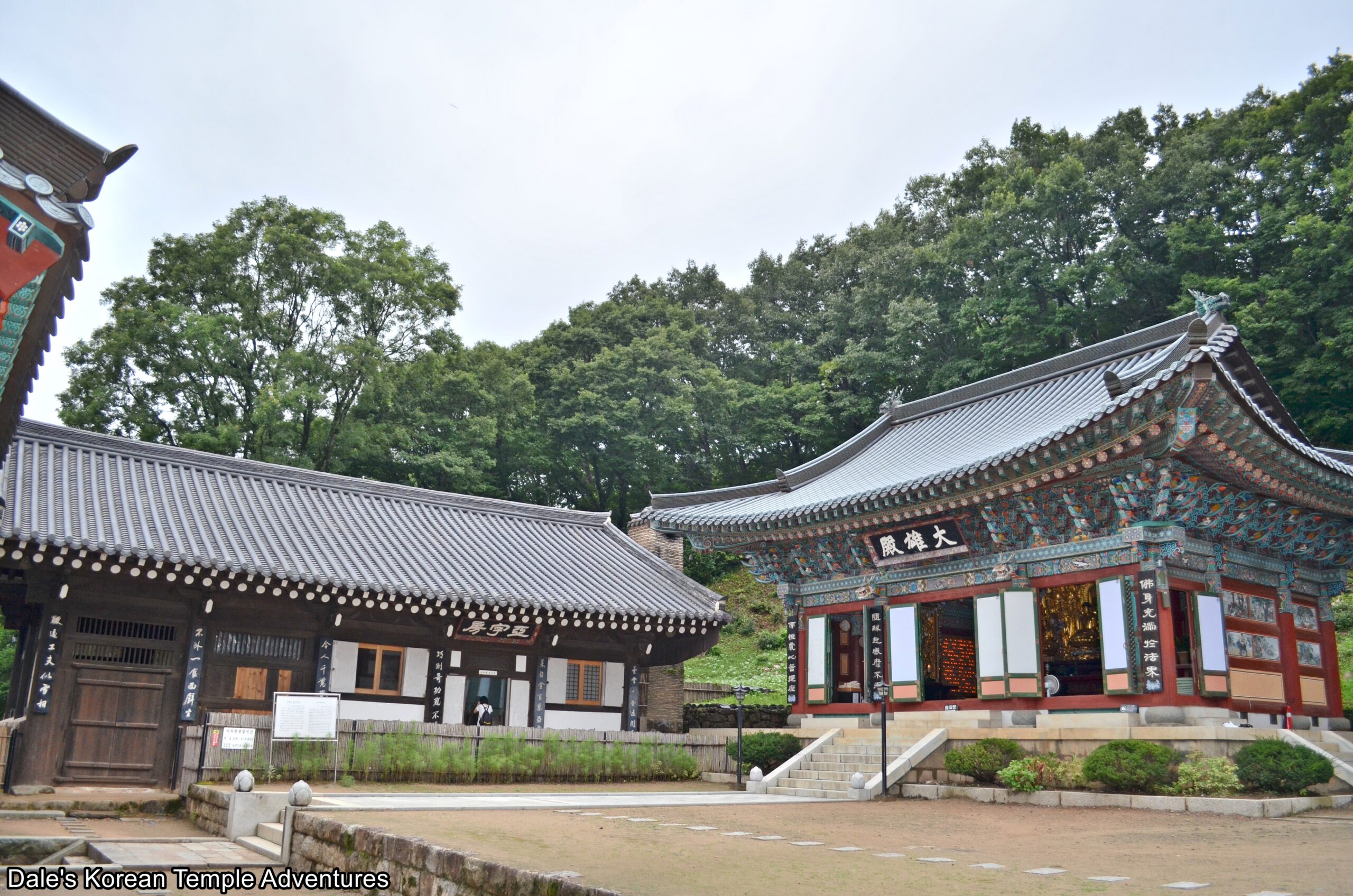
Temple History
Chilbulsa Temple is located in northern Hadong, Gyeongsangnam-do in Jirisan National Park. Chilbulsa Temple, which means “Seven Buddhas Temple” in English, is a reference to the founding of the temple. According to this foundational legend, the seven sons of King Suro (42?-199 A.D.), who was the legendary founder of Geumgwan Gaya (43-532 A.D.), all attained enlightenment. According to this legend, the seven sons were guided by their uncle, Jangyu-seonsa, for two years until they all reached enlightenment. Rather interestingly, the monk Jangyu-seonsa, who instructed the seven princes, was also the brother to Queen Heo (32 A.D. – 189 A.D.), who was the wife of King Suro. Purportedly, this enlightenment, which took two years, took place from 101-103 A.D. However, based upon archaeological evidence from the former Gaya Confederacy (42–562 A.D.), it seems highly unlikely because Buddhism had yet to enter the region. Either way, it makes for quite the legend.
What is actually more likely is that Chilbulsa Temple was first founded in 560 A.D., and it’s situated some 800 metres in elevation. And based upon pungsu-jiri (geomancy), it has one of the most auspicious locations in all of Korea. Unfortunately, a fire broke out at the Chilbulsa Temple in 1800, and it destroyed the entire temple. The temple would later be rebuilt only to be destroyed during the Yeosu–Suncheon rebellion in 1948. The temple would be even more damaged during the Korean War (1950-53). Chilbulsa Temple was finally restored from 1978 to 1984.
Temple Layout
When you first approach Chilbulsa Temple up the mountainside road, you’ll first pass by a large stupa to your right, as well as a stately Iljumun Gate. A little further along, and you’ll finally come to the temple parking lot. The first thing to greet you at the temple, other than the long set of stone stairs, is a beautiful front façade. You’ll need to pass under the two-story Boje-ru Pavilion. While the first floor acts as an entry into the rest of the temple grounds, the second story acts as a lecture hall for larger dharma talks.
Having passed through the Boje-ru Pavilion, you’ll now be standing squarely in the main temple courtyard. Straight ahead of you is the Daeung-jeon Hall. The exterior walls of the Daeung-jeon Hall are filled with a masterful collection of murals. In fact, there are two sets of these murals. The upper set is the Palsang-do (The Eight Scenes from the Buddha’s Life Murals), while the lower set is the Shimu-do (The Ox-Herding Murals). Arguably, the Shimu-do set is the most beautiful at any Buddhist temple in Korea.
Stepping inside the Daeung-jeon Hall, you’ll find a beautiful, golden altar. The main altar is occupied by a triad centred by Seokgamoni-bul (The Historical Buddha) and joined on either side by images of Munsu-bosal (The Bodhisattva of Wisdom) and Bohyeon-bosal (The Bodhisattva of Power). This triad is backed by a stunning, golden relief. To the left of the main altar is an equally golden, and quite elaborate, Shinjung Taenghwa (Guardian Mural) relief. I wouldn’t be surprised if both the main altar relief and the Shinjung Taenghwa relief were created by the same artist. The most original piece of Buddhist artwork inside the Daeung-jeon Hall hangs to the right of the main altar. This is another golden relief; this time, it’s dedicated to the seven sons of King Suro. The artwork is dominated by the seven images of the enlightened Buddhas, but they are joined by images of Chilseong (The Seven Stars), as well as images of King Suro, Queen Heo, and the monk Jangyu-seonsa in the upper right corner of the relief.
Stepping outside the Daeung-jeon Hall, you’ll notice the monks’ living quarters, kitchen, and administrative office to your right when looking at the main hall. And to the left of the Daeung-jeon Hall is the Ajabang Hall, which was first built during the reign of King Hyogong of Silla (r. 887-912 A.D.) by the monk Damgong-seonsa. It was named the Ajabang Hall because of the shape of its floor plan. A cross-shaped central walking floor is raised above U-shaped platforms at each end of the hall for meditation. Each of the platforms are half a metre raised above the floor, which is heated by the Korean traditional ondol system. Sadly, this structure was destroyed by fire in 1951. The structure was later rebuilt with a thatched roof.
The other temple shrine hall that visitors can explore at Chilbulsa Temple is the Gwaneum-jeon Hall to the right of the Daeung-jeon Hall. The exterior walls are adorned in simple dancheong colours. Stepping inside the Gwaneum-jeon Hall, you’ll find a solitary image dedicated to Gwanseeum-bosal (The Bodhisattva of Compassion) on the main altar backed by a red altar painting. Also taking up residence inside the Gwaneum-jeon Hall, and to the left of the main altar, is a red Shinjung Taenghwa (Guardian Mural) painting.
While leaving Chilbulsa Temple, and to the left of the Boje-ru Pavilion, is the compact Jong-ru (Bell Pavilion). Housed inside this bell pavilion is a large bronze bell adorned with Bicheon (Flying Heavenly Deities).
How To Get There
From the Hadong Intercity Bus Terminal, you’ll need to catch either Bus #35-1 or Bus #35-2 to get to the Hwagye Bus Terminal. From the Hwagye Bus Terminal, you’ll then need to take a bus bound for Beomwang. After the bus drops you off, you’ll then need to walk thirty minutes to get to Chilbulsa Temple.
Overall Rating: 7/10
One of the main highlights to Chilbulsa Temple is the golden interior of the Daeung-jeon Hall from the collection of golden reliefs to the main altar statues and large, red canopy. Another highlight is the once historic Ajabang Hall to the left of the main hall, as well as the beautiful interior of the Gwaneum-jeon Hall and the murals that adorn the exterior of the main hall. Along with all of these artistic endeavours is the beauty of Mt. Jirisan that surrounds the temple.
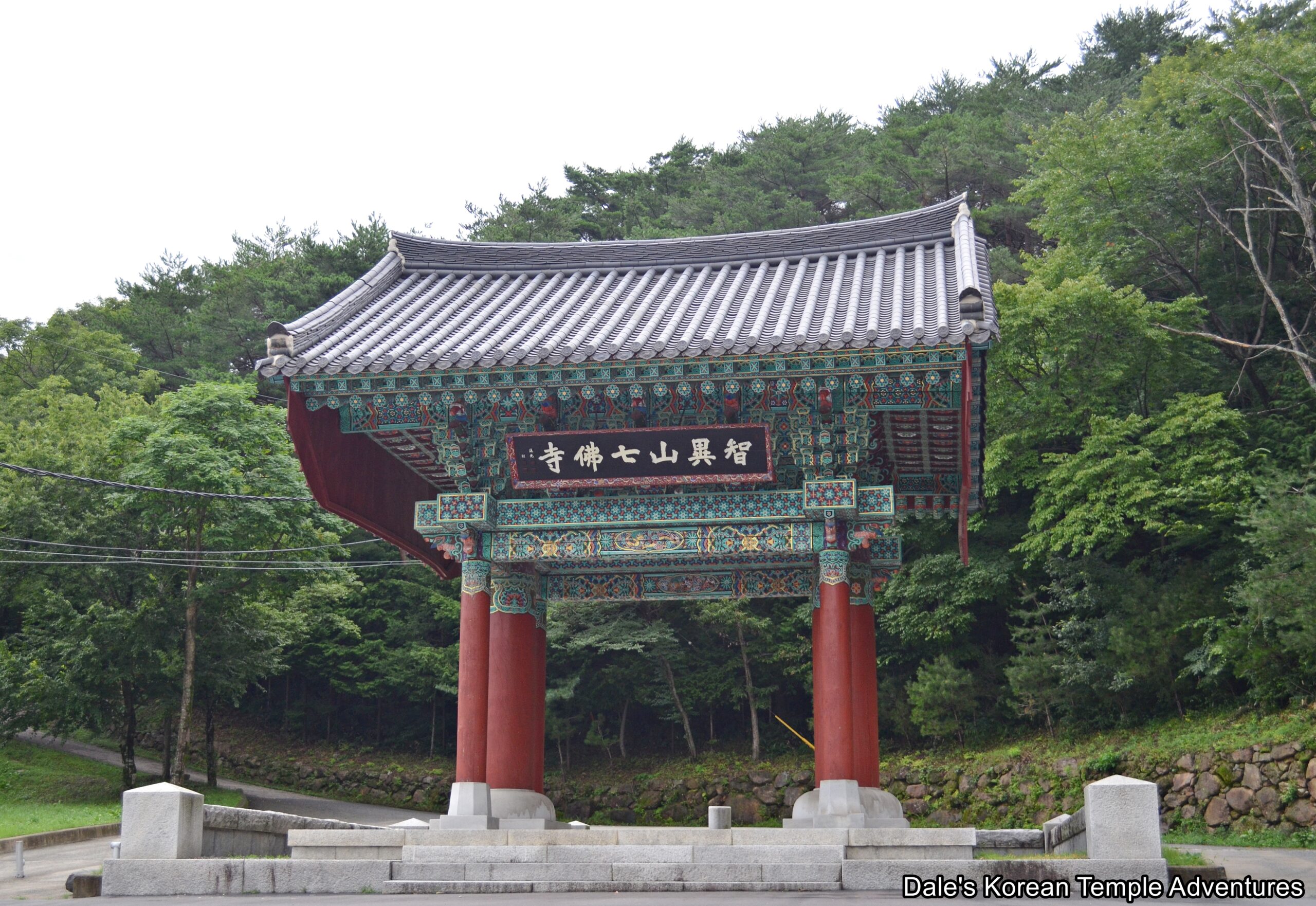
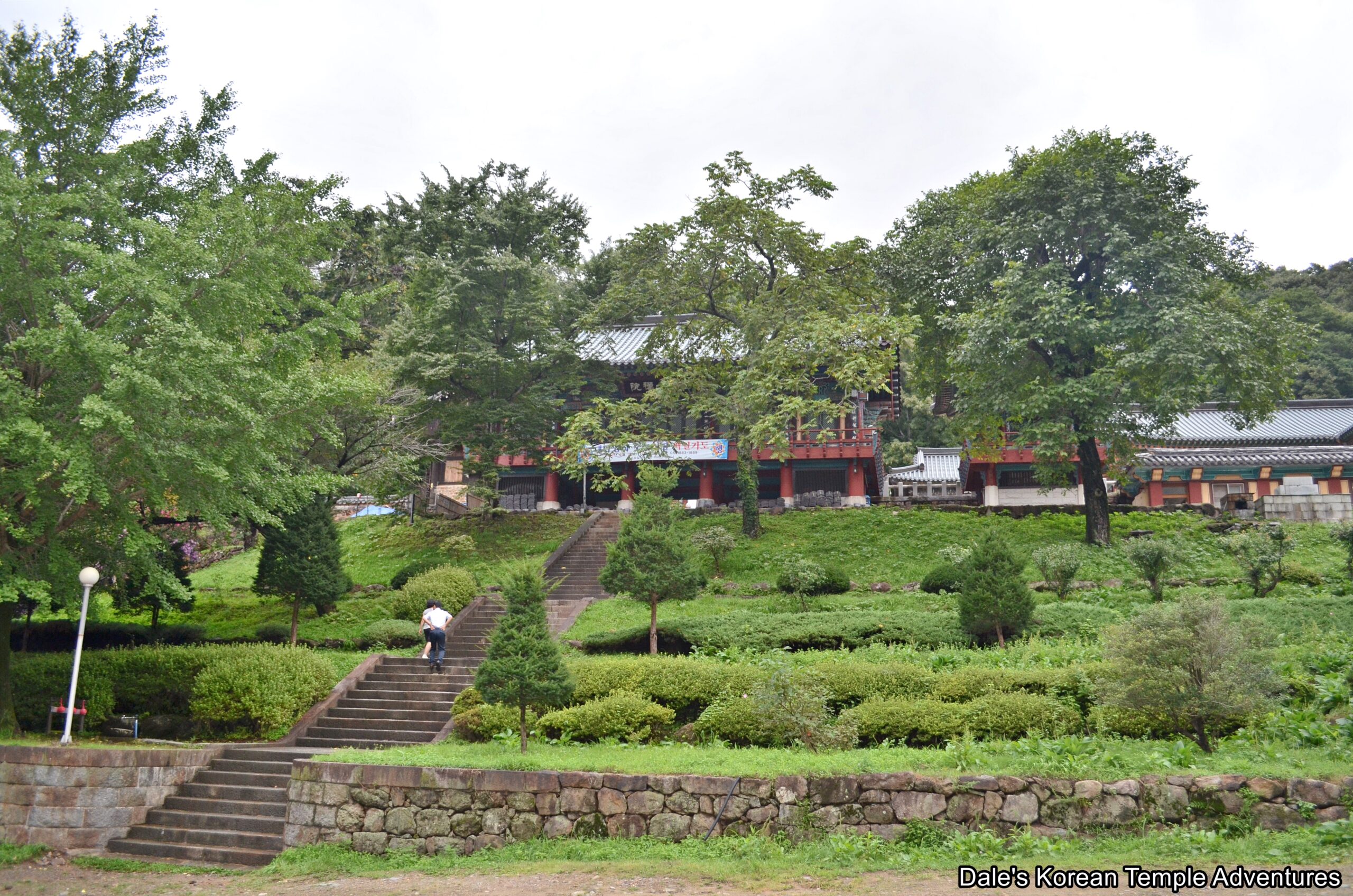

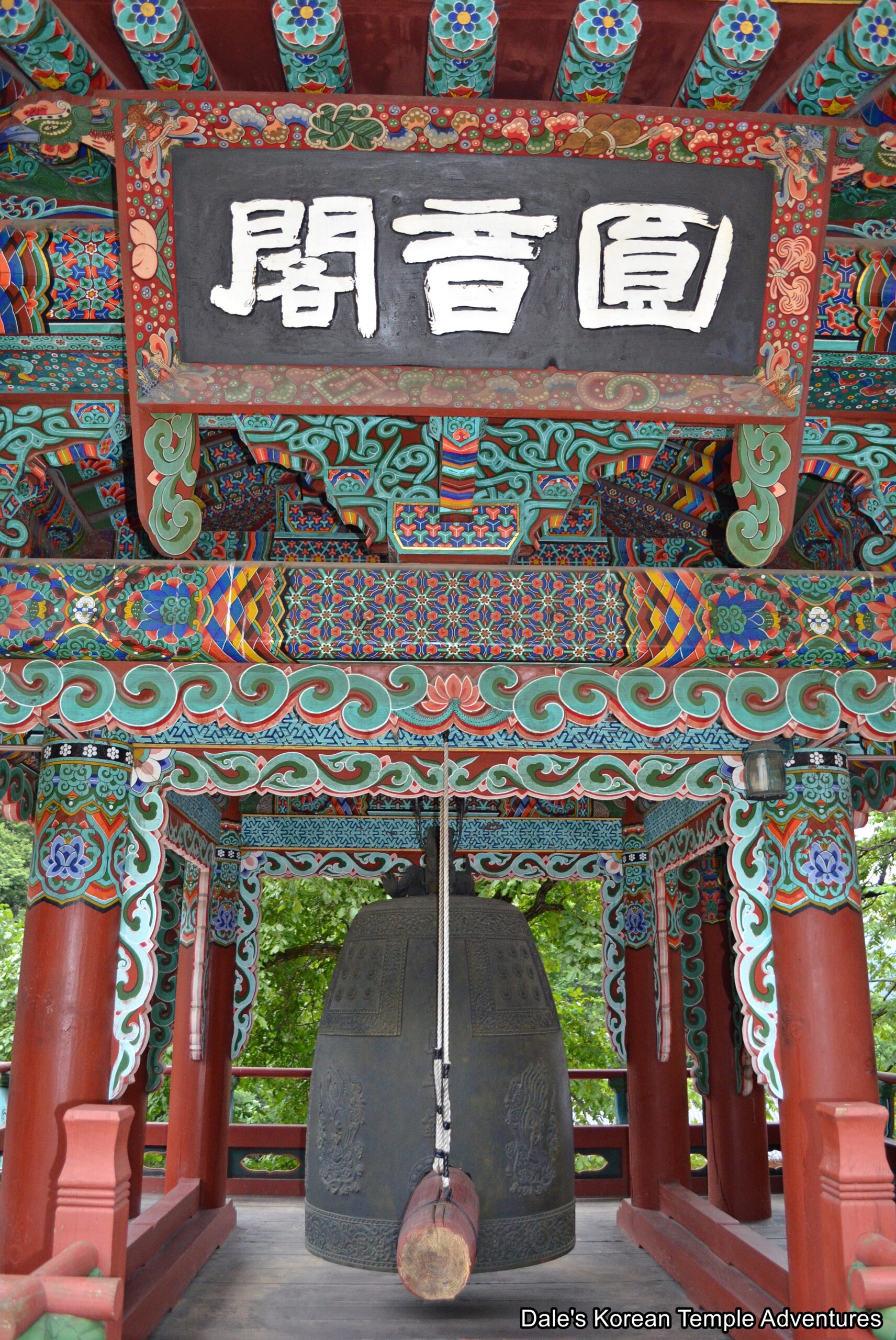
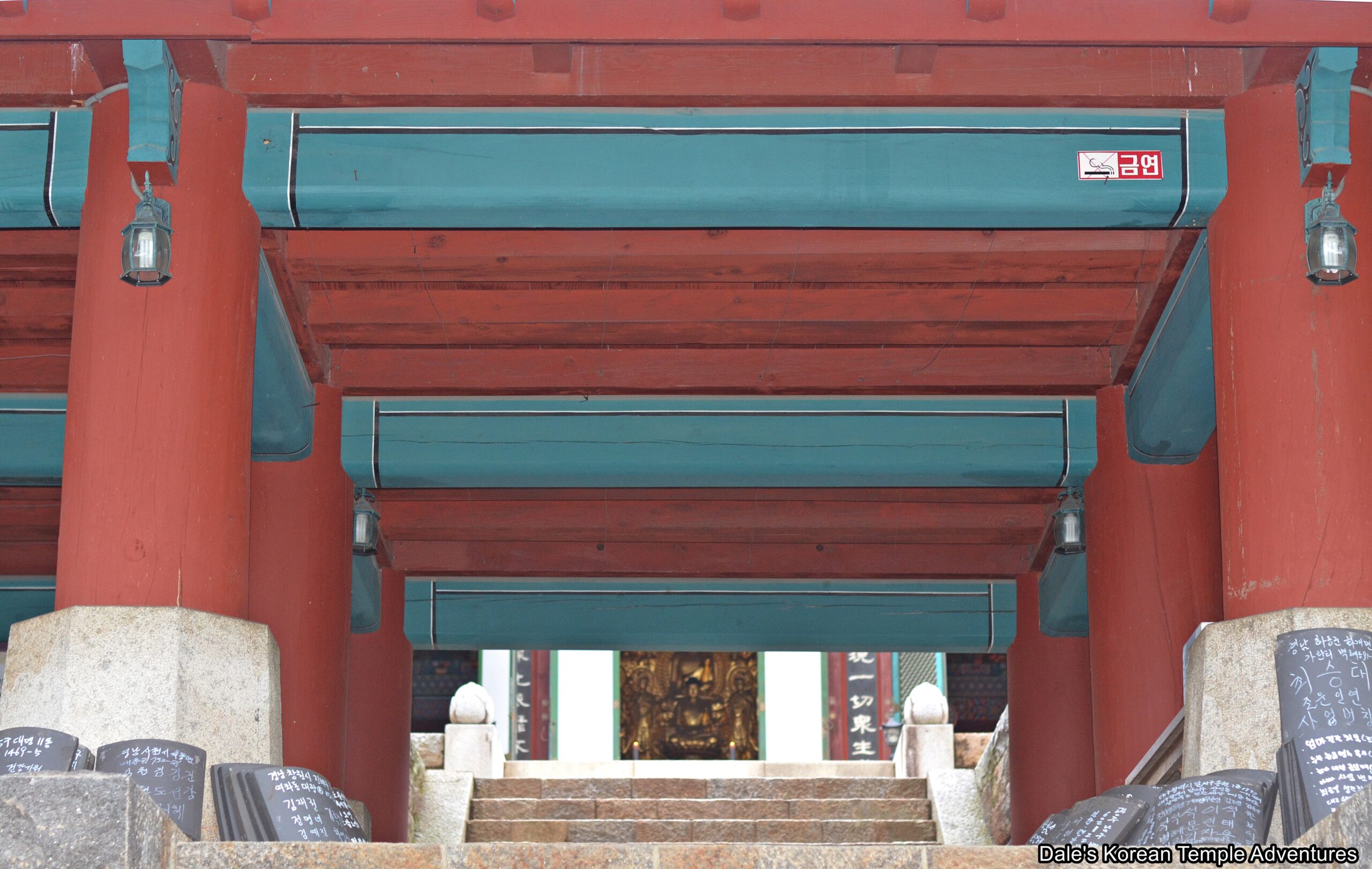
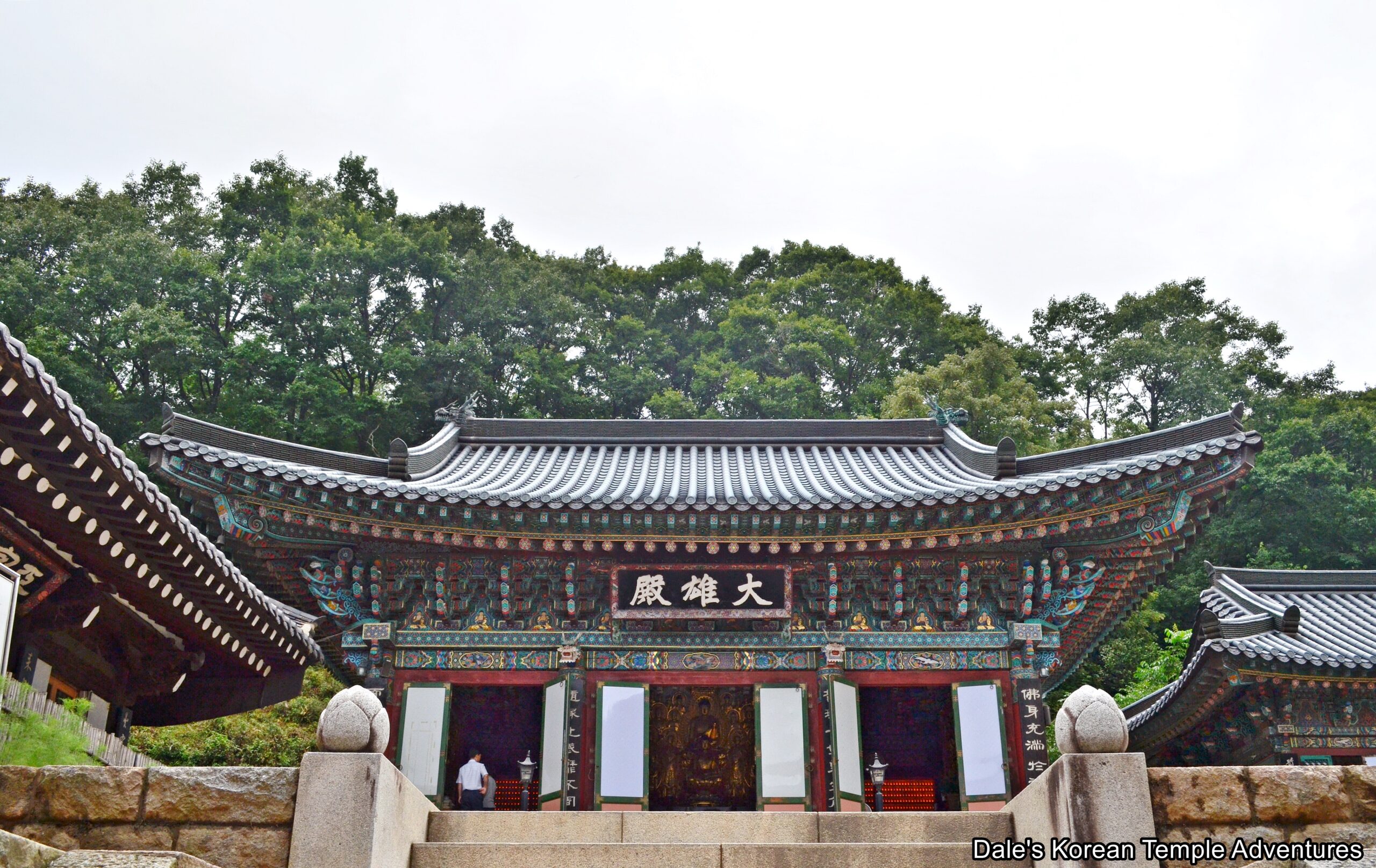
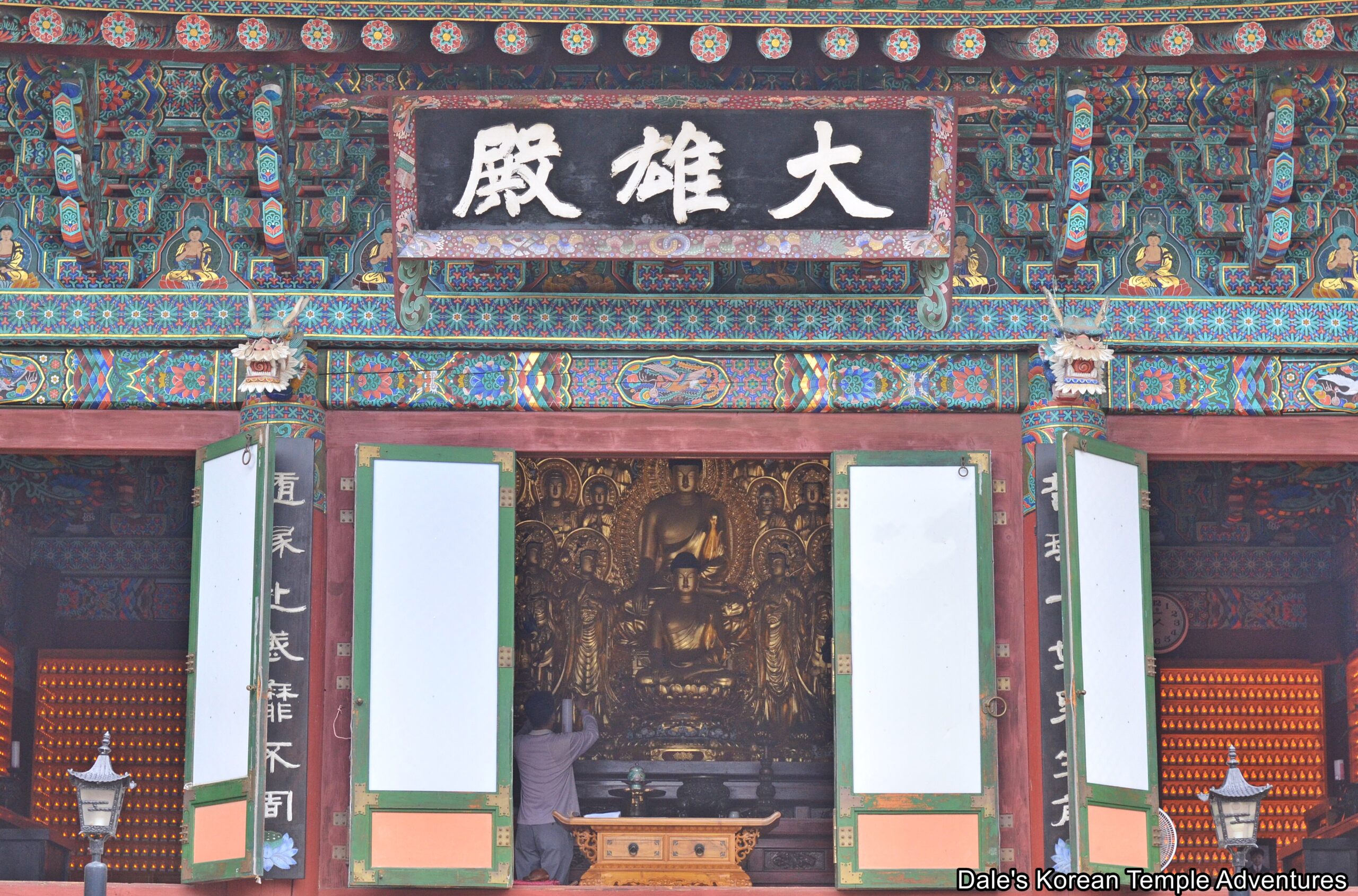
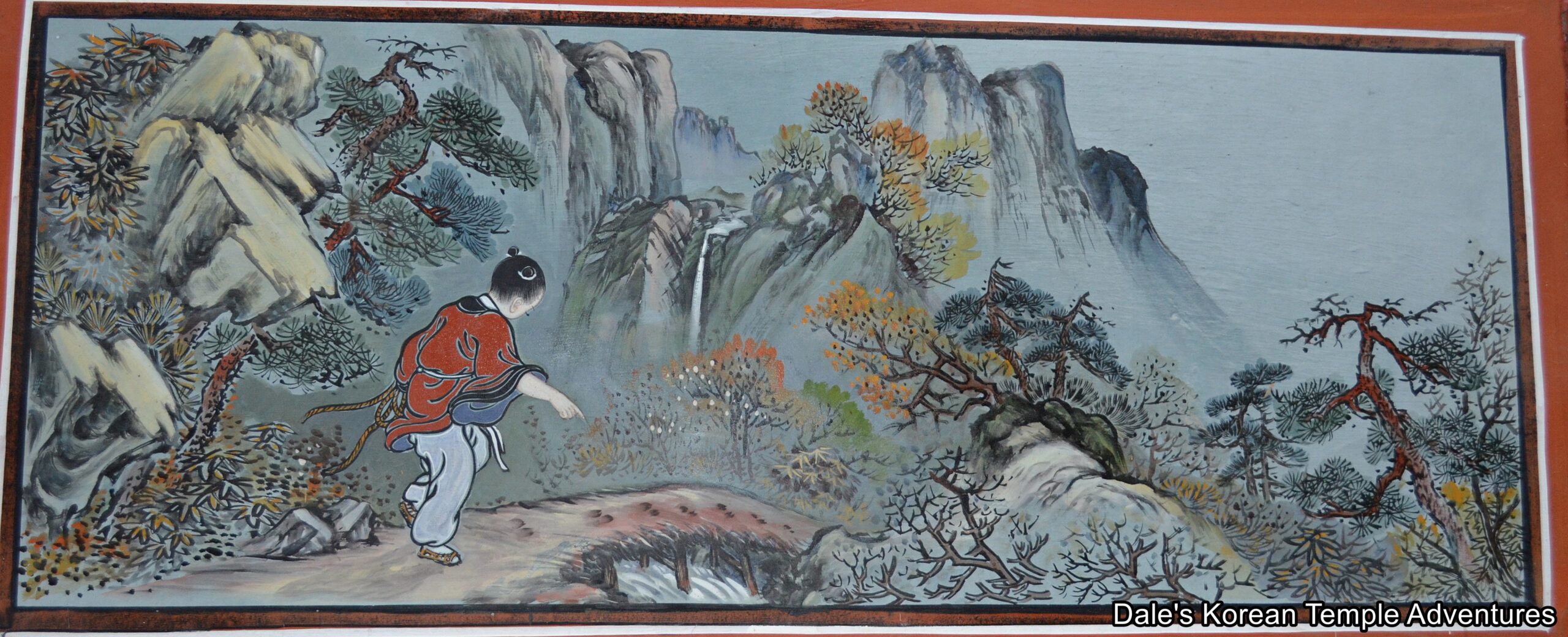
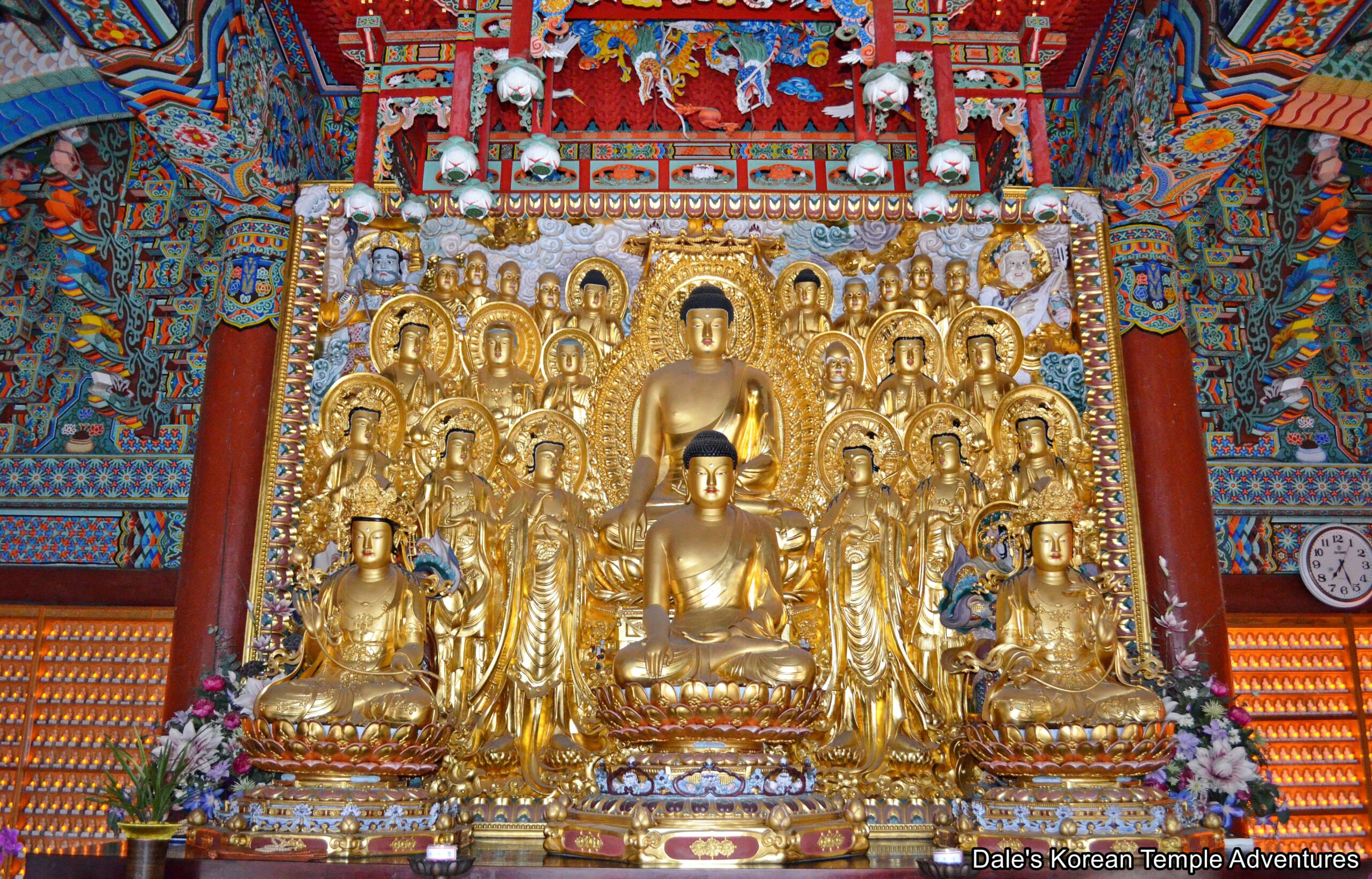
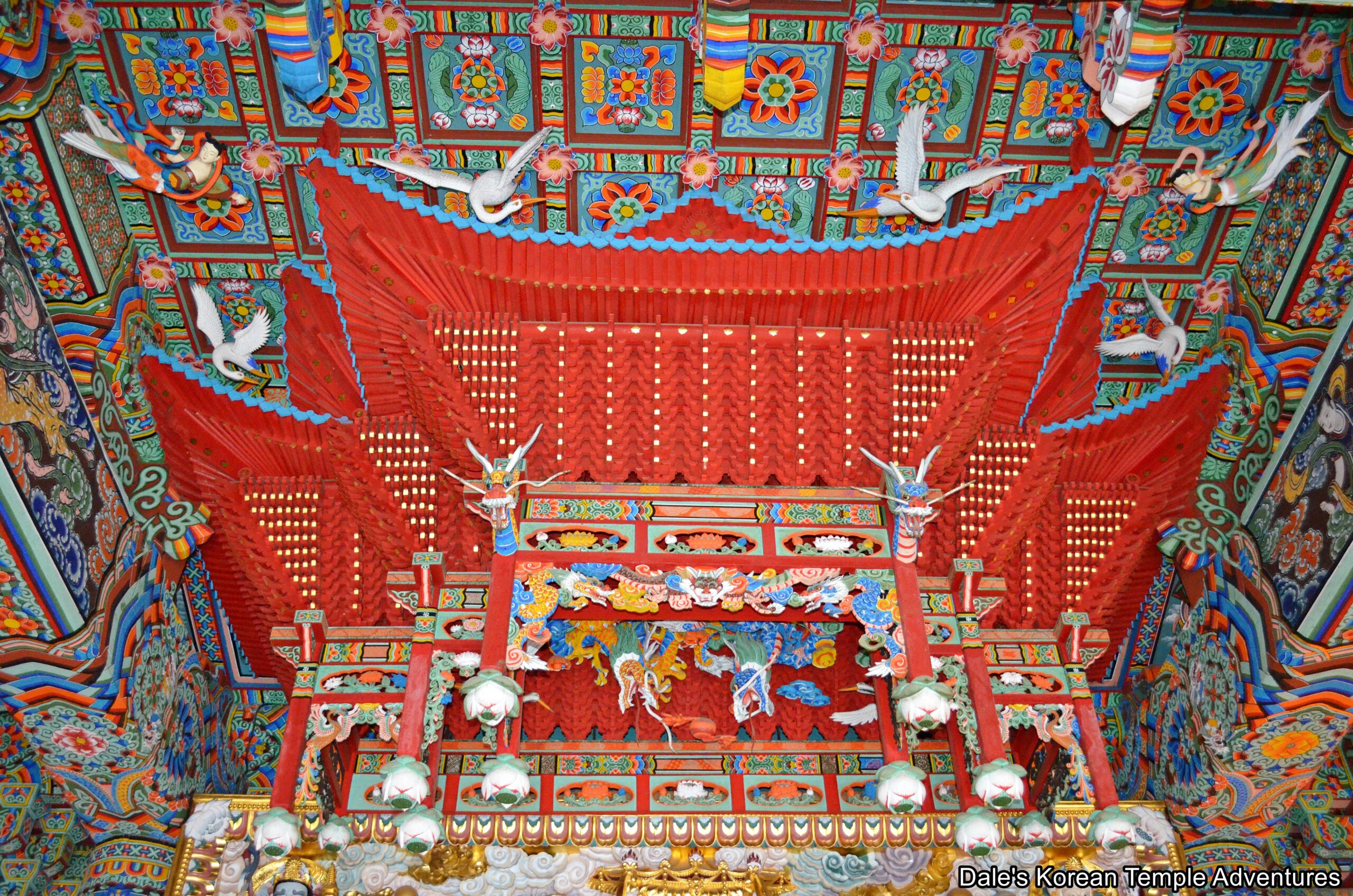
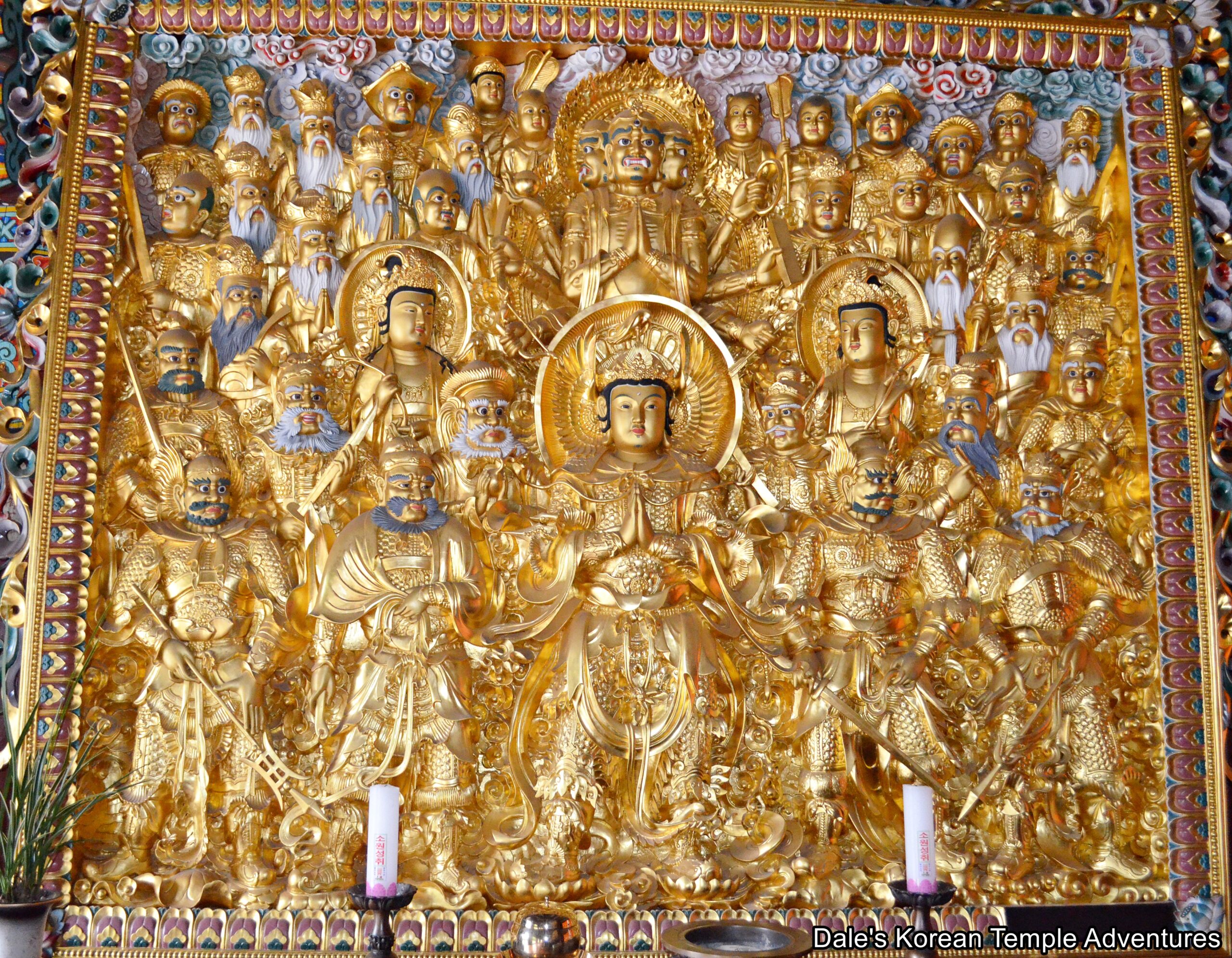
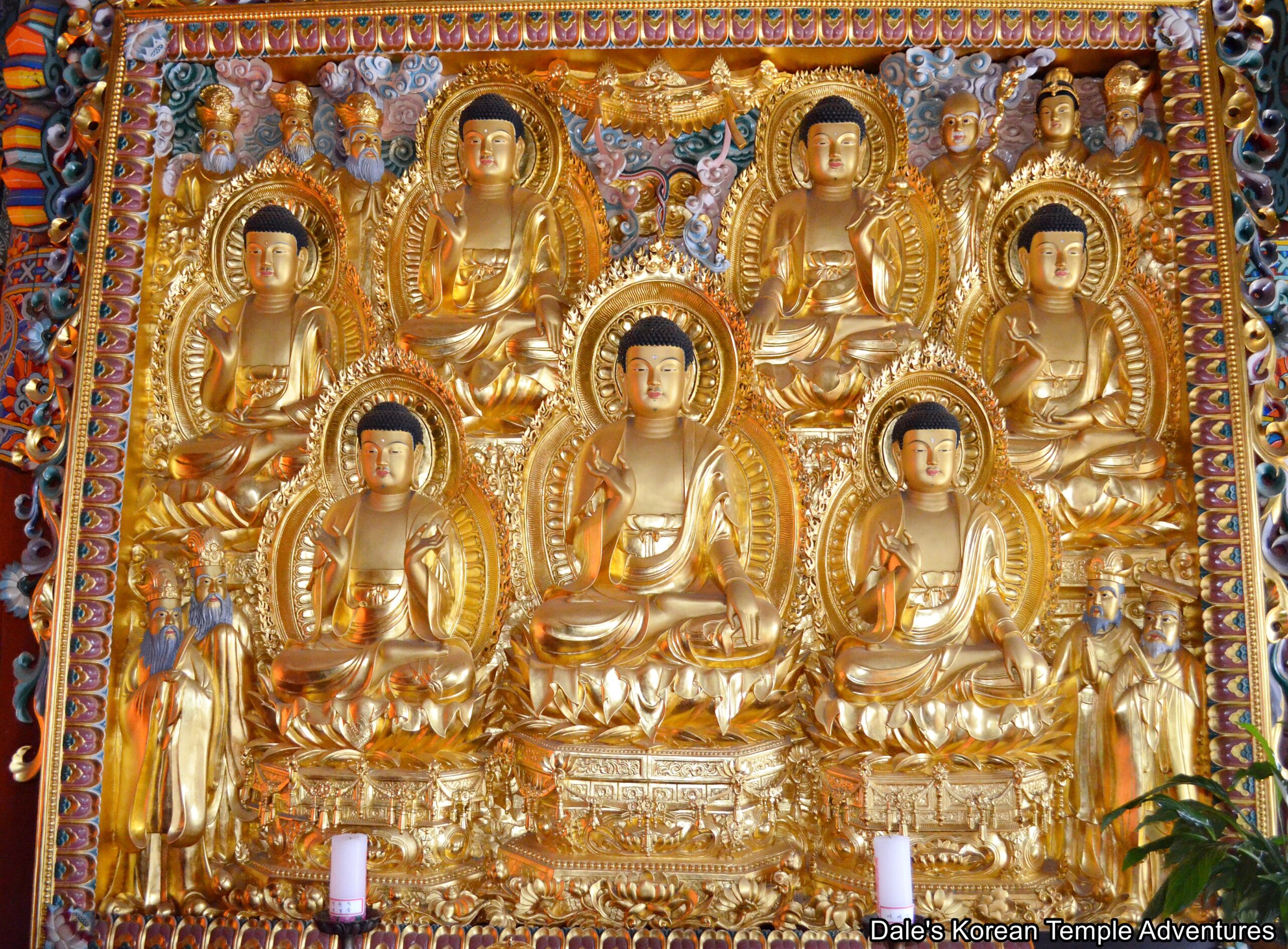
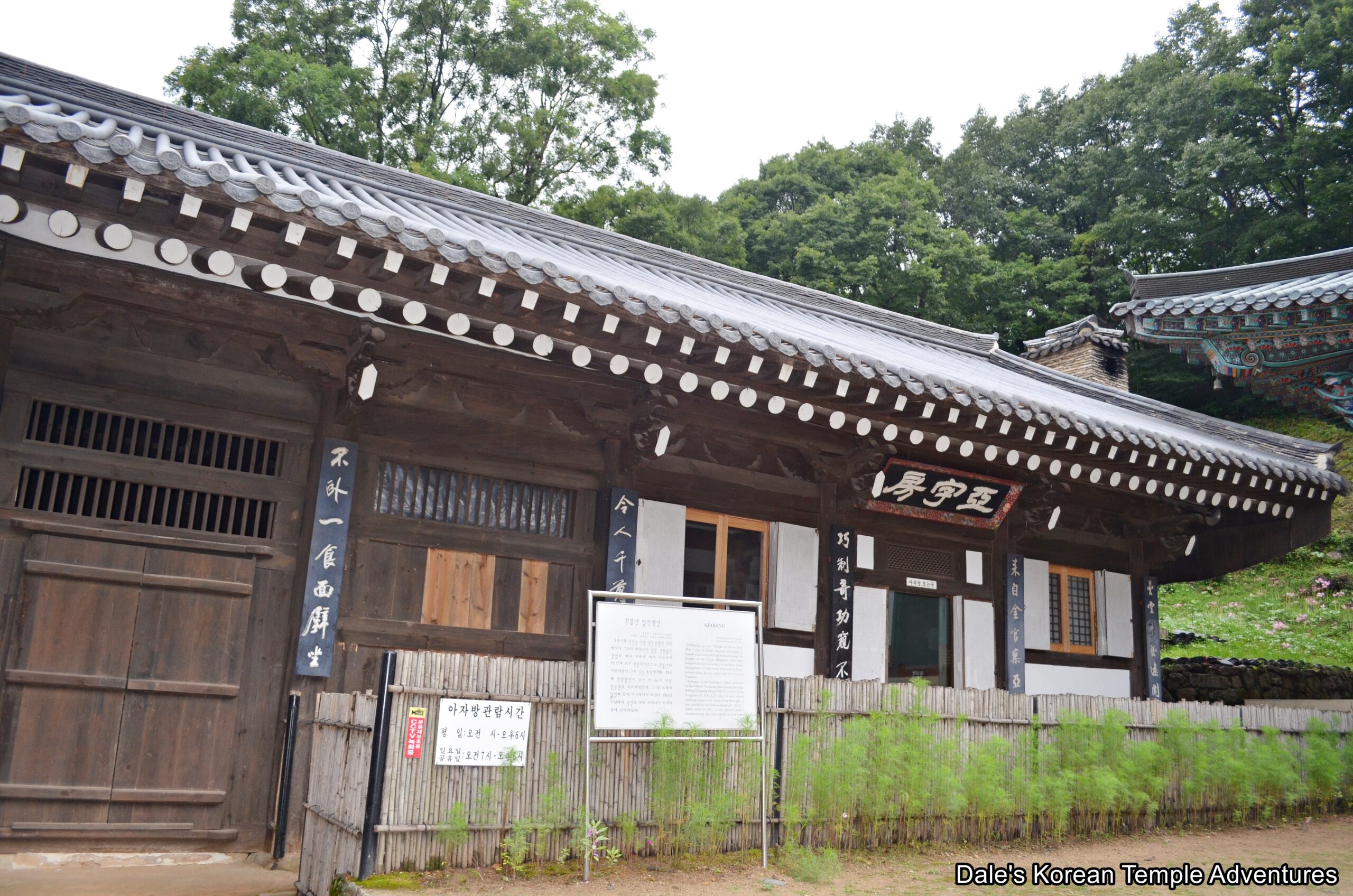
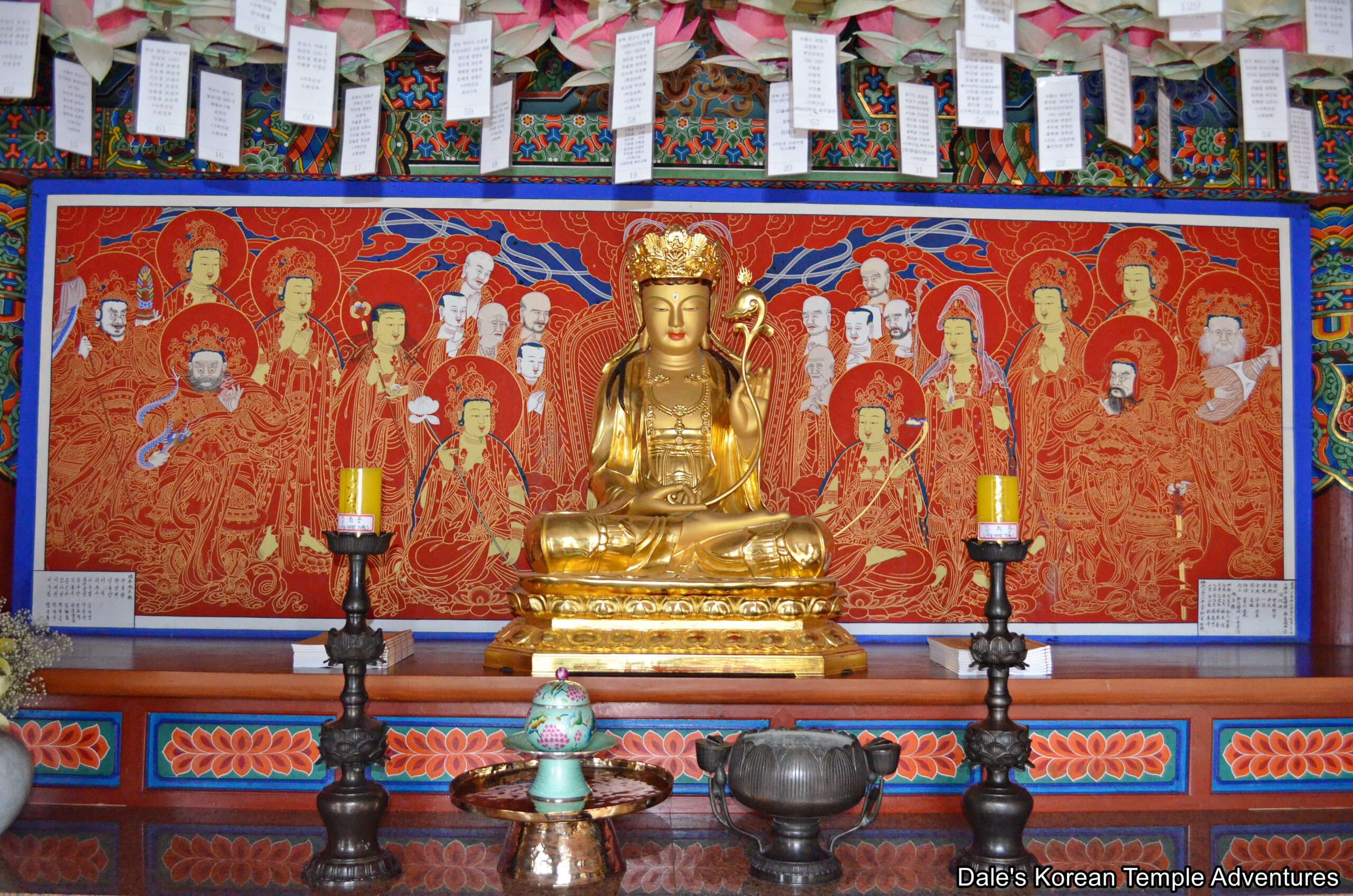


Recent comments